The Democrats’ $3.5 trillion reconciliation bill contains the largest ever investment to combat the long-term impacts of climate change.
It would also do little in the short-term to prevent the kinds of damage and lost lives America saw in the wake of the hurricanes and storms that wracked the country in the last month.
This is a critical point that has been lost in much of the reporting about what this legislation will and won’t do.
A carbon molecule emitted into the air today persists in the atmosphere for 300 to 1000 years. Combating climate change is a multi-generational undertaking. That means that in the short-term, improving the resilience of our infrastructure is perhaps the most urgent task our government can fulfill to save lives and prevent damage.
That’s why the $1.2 trillion bipartisan infrastructure bill awaiting action in the House is such an immediate priority. According to Pew, the bill “contains disaster and flood-resilience provisions of historic proportions. The once-in-a-generation investment would include billions of dollars in resilience measures that would help protect communities from flooding and other disasters at a time when people across the country, and around the world, are struggling to combat the increasing severity of deadly storms and rising seas.”
In much of the recent reporting, climate measures tend to get lumped into a single, all-encompassing environmental policy bucket. But in the context of Congress’ current legislative priorities, it is essential to recognize that lawmakers are considering two very different kinds of policies, which are designed to either:
- Improve resilience and mitigate the impacts of severe weather and natural disasters, or
- Combat the underlying drivers and long-term impacts of climate change
The New Center analyzed both the $1.2 trillion bipartisan Infrastructure Investment and Jobs Act as well as the Democrats’ emerging $3.5 trillion reconciliation package, where it became clear the former prioritizes resilience funding, while the latter prioritizes long-term climate change solutions.
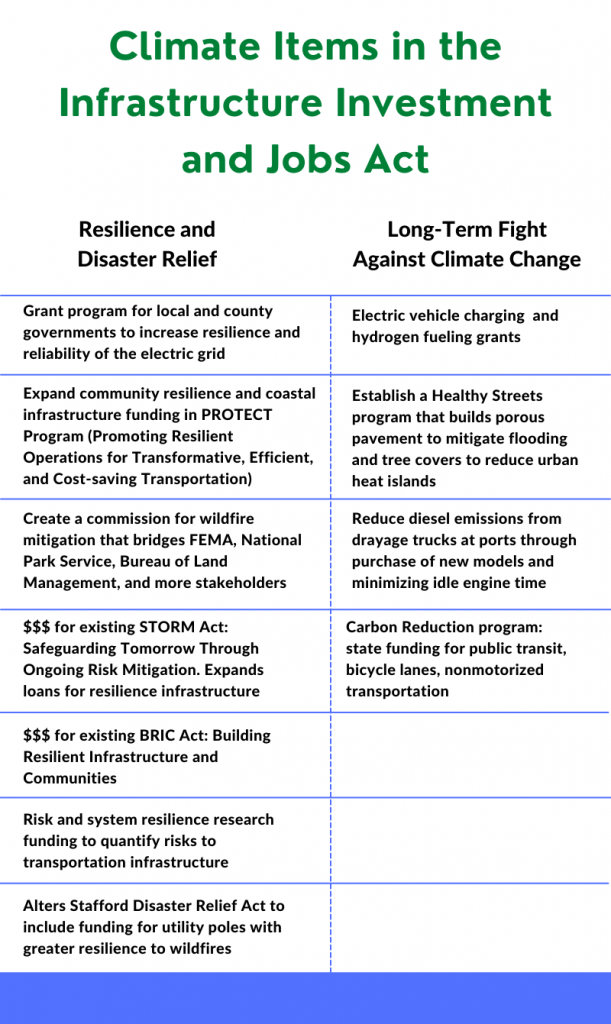
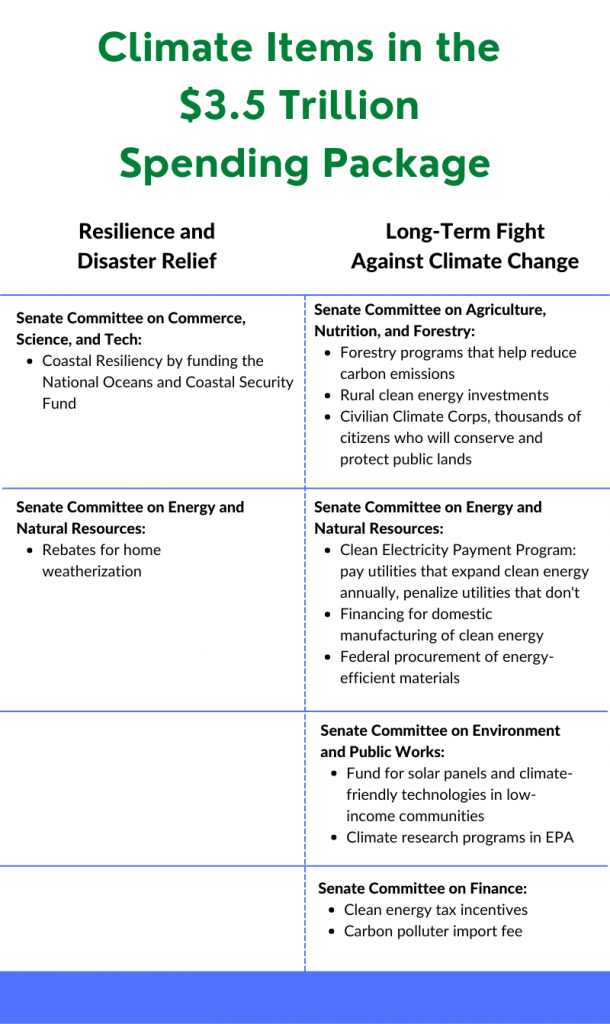
Congress is once again arguing over who should be responsible for lifting the federal debt ceiling, which is a statutory cap on how much the U.S. Treasury is authorized to borrow.
The debt ceiling is also possibly the single worst policy on the books in Washington today.
It sounds like it has something to do with enforcing fiscal responsibility but, in fact, works against this goal. Debate over whether to extend the debt limit is not a debate as to whether the federal government should incur debt but rather a question about whether Congress should authorize the Treasury to finance the deficit it has already incurred.
In reality, the debt limit is little more than a tool for both Democrats and Republicans to grandstand over the debt without doing anything about it.
Before 1917, the Treasury Department had to repeatedly request congressional approval to increase borrowing. By creating a new federal debt limit, the Second Liberty Bond Act made it so that the Treasury did not need to communicate with Congress unless it borrowed beyond the limit.
When the debt limit was enacted, the federal debt was $5.7 billion, or $121.8 billion in today’s dollars. Today, the federal debt is $28.4 trillion. The debt ceiling does not curb federal spending.
Until recently, raising the debt limit was a bipartisan and typically routine exercise, with Congress raising the debt limit 78 times since 1960.
But now the debt ceiling has become a partisan football, with each party allowing the U.S. to come dangerously close to breaching the debt ceiling each time it comes up and resulting in the U.S. potentially defaulting on its obligations for the first time in history.
If that were to occur, here’s what could happen next according to Moody’s Analytics:
“Shutting the government down would not be an immediate hit to the economy, but a default would be a catastrophic blow to the nascent economic recovery from the COVID-19 pandemic. Global financial markets and the economy would be upended, and even if resolved quickly, Americans would pay for this default for generations, as global investors would rightly believe that the federal government’s finances have been politicized and that a time may come when they would not be paid what they are owed when owed it. To compensate for this risk, they will demand higher interest rates on the Treasury bonds they purchase. That will exacerbate our daunting long-term fiscal challenges and be a lasting corrosive on the economy, significantly diminishing it.”
To buy time for Congress to raise the debt ceiling, Janet Yellen, Secretary of the Treasury, has implemented the Treasury Department’s extraordinary measures, which can bring quick cash from tactical shifts in government accounts. This can keep government spending moving but only for a few weeks after the debt limit has been reached. On October 18th, extraordinary measures will be exhausted, and the U.S. will be looking at a default.
Even coming close to breaching the debt ceiling can be damaging to the U.S. In 2011, Congress came perilously close to breaching the debt ceiling, and Standard and Poor’s reduced the U.S. credit rating from AAA to AA+ because the “capacity of Congress to deal with the debt has become less stable, effective, and predictable.”
If Congress really wanted to improve fiscal responsibility, there are feasible alternatives such as pursuing a debt to GDP ratio (like in Germany and Poland) or reinstituting the Gephardt rule, which automatically allows the Treasury to borrow the amount it needs to accommodate spending bills.
The debt ceiling is nothing more than a political football. Let’s get this ball off the field and stop making a game out of America’s creditworthiness.
A U.S. intelligence assessment from June 2021 estimated that the Taliban would capture Kabul, the capital of Afghanistan, within six months of U.S. military withdrawal. In early August, American intelligence officials projected that the Taliban’s takeover of Afghanistan would occur in 30 to 90 days. Both estimates were catastrophically wrong. On August 15, two weeks before U.S. troops were scheduled to be completely withdrawn, Kabul fell under Taliban control after a military offensive that unfolded in mere days. Many Americans are understandably asking how these different intelligence assessments got things so wrong.
Answering that question requires first answering another:
Who actually delivered these various intelligence assessments, and how did they come to such different conclusions? The New Center investigated to find out.
What is the “intelligence community?”
News stories feature countless references to the U.S. intelligence community, often leaving the impression that it is a monolith. But the U.S. intelligence community is made up of 18 different agencies across the federal government that are supposed to cooperate to deliver strategic intelligence up the executive chain of command.
The Department of Defense (DoD) incorporates nine entities. The Navy, Army, and Air Force each contain a respective intelligence apparatus. Military-wide intelligence is gathered by the Defense Intelligence Agency (DIA). The CIA and Office of the Director of National Intelligence (ODNI) exist outside of the DoD. Additional intelligence organizations operate under bodies such as the Drug Enforcement Agency and the Department of the Treasury.
How much consensus is there between different intelligence agencies?
This month, The New York Times reported that “[s]harp disagreements have…persisted in the intelligence community” over Afghanistan. For example, the CIA questioned the strength and cohesiveness of Afghan forces while the DIA, according to The Hill, was “more optimistic” about the Afghan coalition’s ability to stave off the Taliban’s offensive. This difference in reporting is not surprising because “American military commanders given the task of training the Afghan military were reluctant to admit their efforts were failing.”
How does the U.S. intelligence apparatus compare with other countries?
Some argue that the U.S. has too many intelligence agencies. Russia has three, the UK four, and China two. Of the 18 U.S. intelligence agencies, the DIA, CIA, NSA, National Geospatial Intelligence Agency, National Security Advisor, and others were involved in reporting on Afghanistan.
How has the U.S. tried to reconcile different assessments within the intelligence community?
After 9/11, investigations revealed that different intelligence agencies had crucial intel that, if pooled together, might have prevented the attack. In 2004, President George W. Bush established the Office of the Director of National Intelligence, responsible for uniting siloed agencies and information in the intelligence community. The ODNI’s “Joint Duty” program encourages and provides the structure for intelligence officers to work under agencies outside their own, although scattered and sometimes conflicting intelligence assessments continue to be a problem.
How thorough was the intelligence reporting on Afghanistan?
Probably not as thorough as it needed to be. An unclassified, 27-page report from the ODNI in April skimmed over Afghanistan in just under eight lines. The report stated, “The Taliban is likely to make gains on the battlefield, and the Afghan Government will struggle to hold the Taliban at bay if the coalition withdraws support.”
In April, during the first confirmed month of troop withdrawal, the only unclassified intelligence report left information about Afghanistan that was vague and incomprehensive. Stating that the Taliban would be “likely” to “make gains” was an understatement.
How do political considerations shape intelligence reporting?
An article in the International Journal of Intelligence and CounterIntelligence points to a plausible theory that underpins this Afghan intelligence failure. “When intelligence clashes with political and diplomatic goals, the sanctity of intelligence often loses: seldom do Presidents want their diplomatic initiatives to be the sacrifice.”
In other words, U.S. intelligence can be processed and digested to comport with a pre-established agenda. Both President Trump and President Biden sought the removal of U.S. forces from Afghanistan before September 11, 2021. To support the political goal of withdrawal, intelligence reporting could have been shaped to paint a rosier picture of the situation in Afghanistan.
When reporters write “intelligence analysts,” what do they mean?
News outlets covering the events in Afghanistan have used terms like “intelligence analysts,” “intelligence officers,” “intelligence officials, “the intelligence community (IC),” and more. These terms respect the confidentiality of sources who speak in anonymity—sources that work in one of the 18 intelligence agencies, a large enough bucket that a source cannot be identified even to a specific agency. For use of anonymous sources such as the nondescript “intelligence community,” the Associated Press stipulates three criteria: “The information is from a credible source with direct knowledge… it brings to light important facts that otherwise would remain in the shadows; and… the information can be obtained no other way.” Reporters must also verify their source’s information by attempting to consult other anonymous sources.
This spring, the White House released the two signature planks of President Biden’s Build Back Better domestic agenda–the American Families Plan (AFP) and the American Jobs Plan (AJP)–which envisioned more than $4 trillion in spending on priorities ranging from child care and affordable housing to infrastructure and climate change initiatives.
The traditional infrastructure components of the President’s agenda are moving through the bipartisan bill that recently passed the Senate on a 69-30 vote, while Democratic congressional leaders are planning to move the other parts of the AFP and AJP through a separate reconciliation bill.
But here’s an important question: Where did all these policy priorities come from? The answer may lie in a mostly forgotten document that was released at the end of the 2020 Democratic primary.
Last year, weeks before the Democratic National Convention, as then-candidate Biden became the frontrunner and Sanders trailed behind, both candidates came together in a gesture of party unity to recommend a set of policy guidelines for the country. The group of analysts and policymakers who were consulted became known as the Unity Task Force.
Their recommendations, released in July 2020, touched on climate, immigration, criminal justice, healthcare, economy, and education. The New Center sought to investigate to what extent this 112-page document has been a blueprint for understanding Biden’s domestic policy agenda. Was collaborating with Sanders merely a short-term maneuver to secure support from progressives? Or was it a bellwether for the four years to follow?
Here’s the biggest takeaway of our research:
- Almost every measure in the American Jobs Plan and the American Families Plan corresponds to a goal or a specific policy in the Unity Task Force document.
If this Unity Task Force document is indeed a Rosetta Stone for what the Biden administration is doing now, it also offers clues as to what it may aim to do in the future—as there are several policies in the Unity Task Force document that did not make it into the Biden administration’s initial Build Back Better agenda.
In the below interactive graphics, we do a side-by-side comparison to show exactly where the policies from President Biden’s Build Back Better agenda correspond to a Unity Task Force recommendation. We also show, separately, the Unity Task Force recommendations that could be coming down the pike.
The Unity Task Force Recommendations document has outlived its news cycle. Its direct connection with present White House priorities makes it a document that can foretell priorities to come.
Biden 2021 Build Back Better Agenda
American Jobs Plan
Click on a box to view research in greater detail.
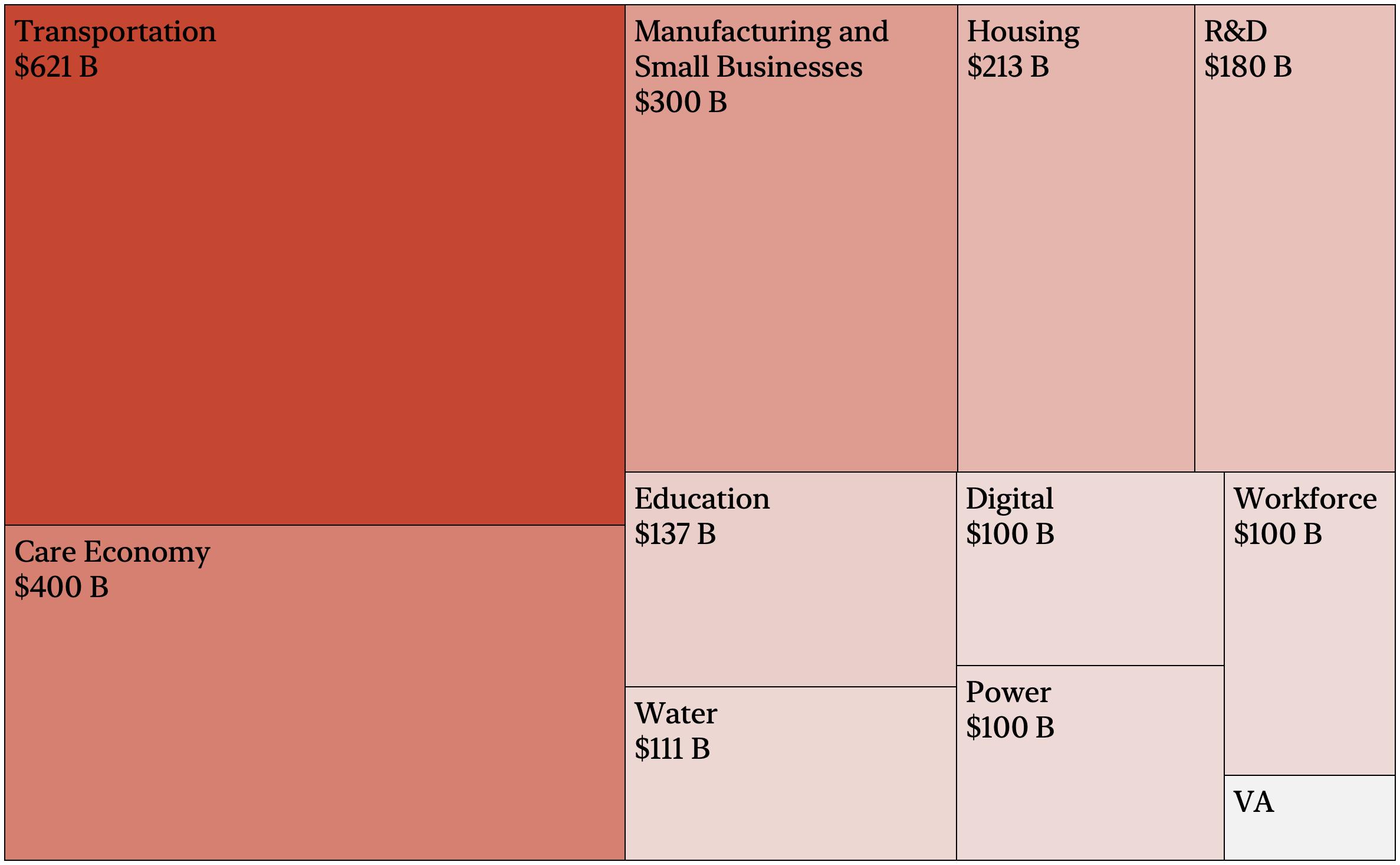
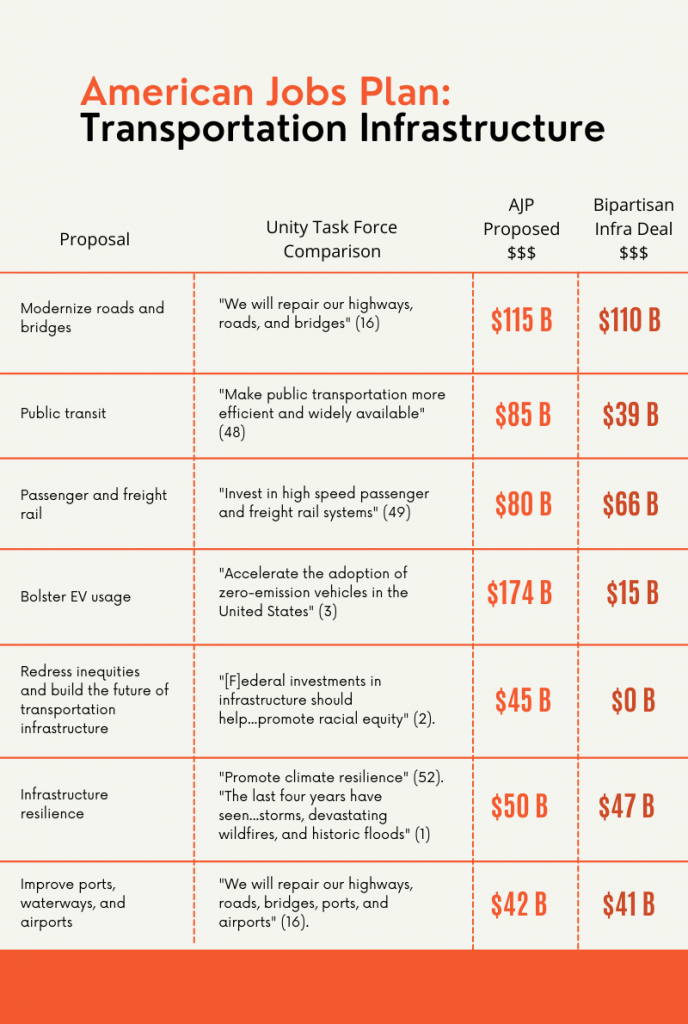

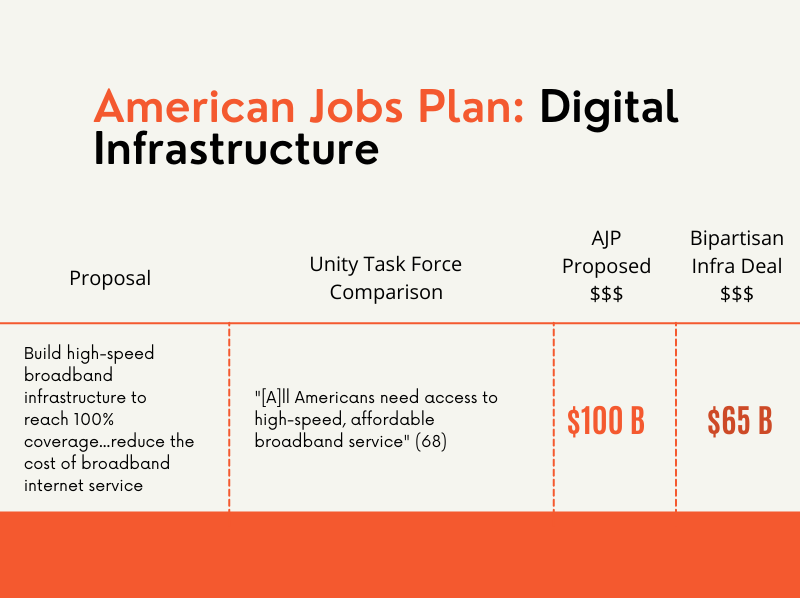
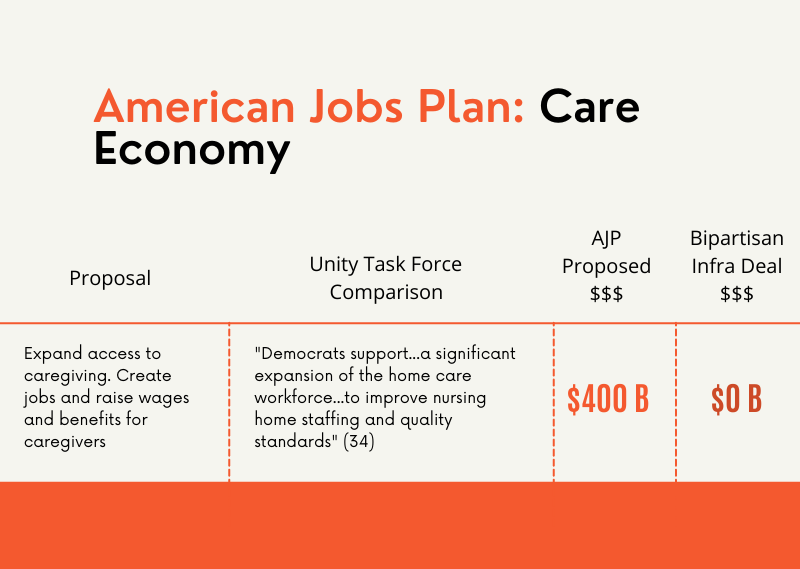
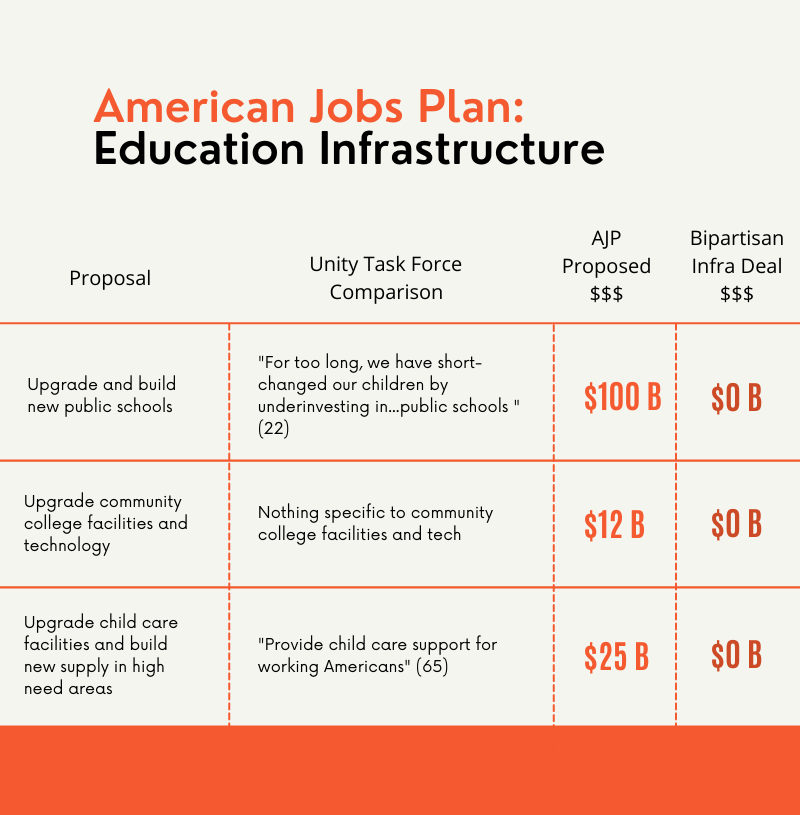
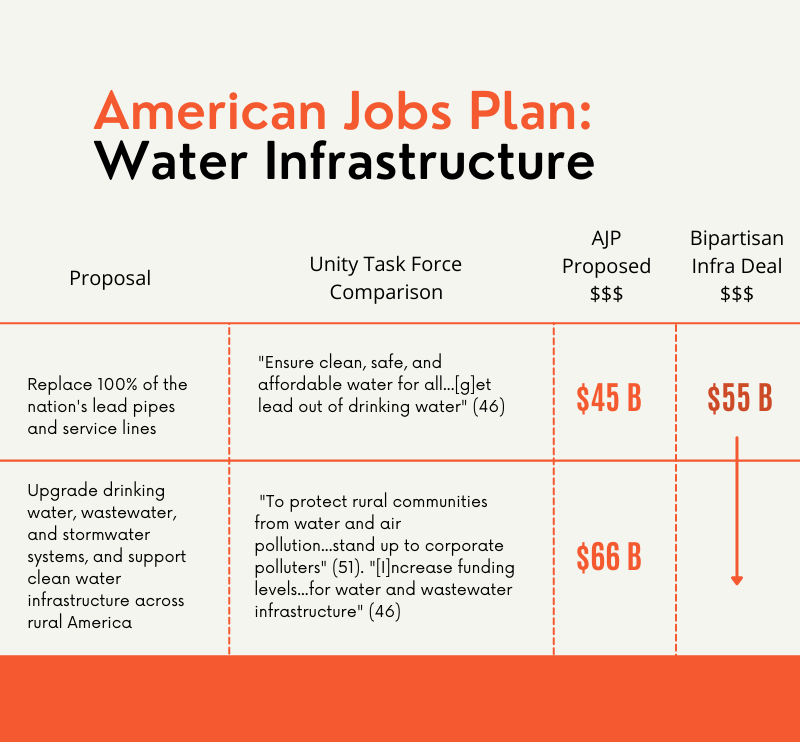
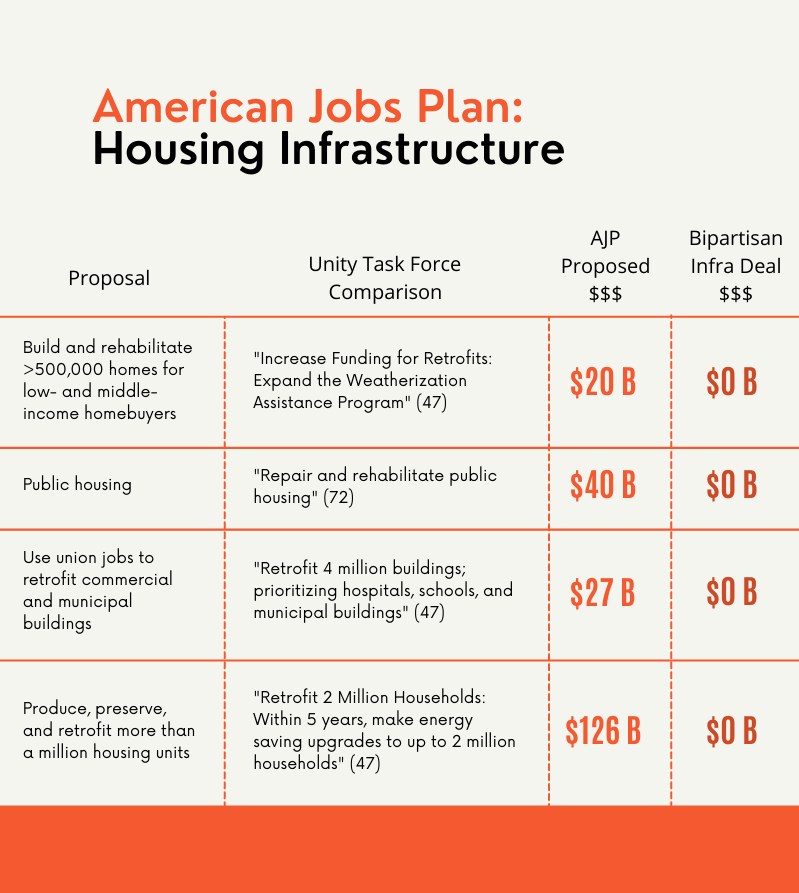
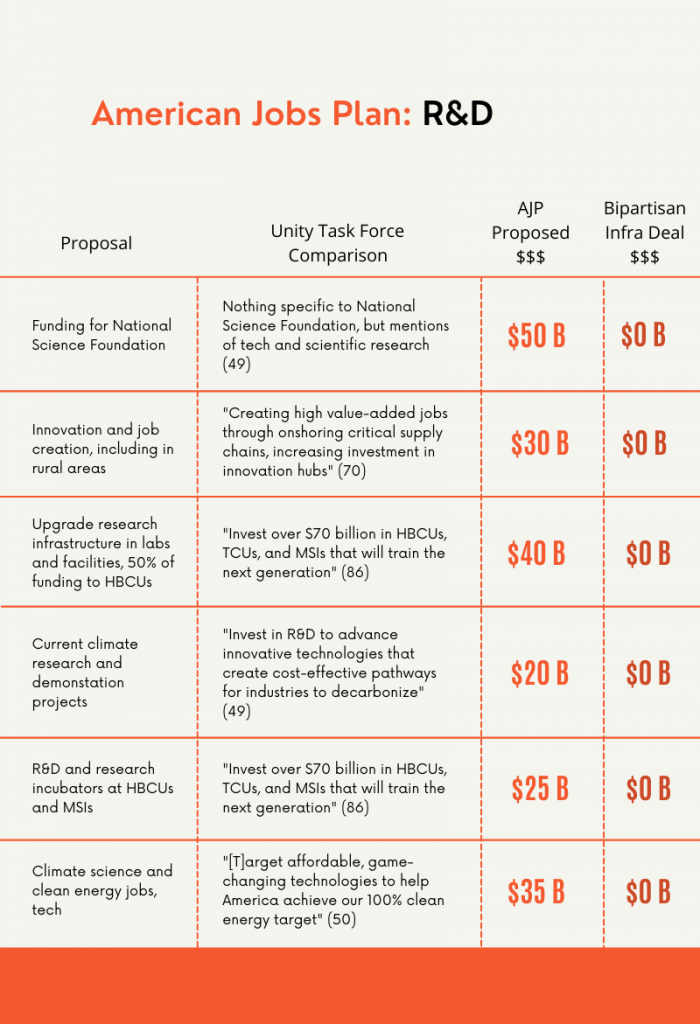
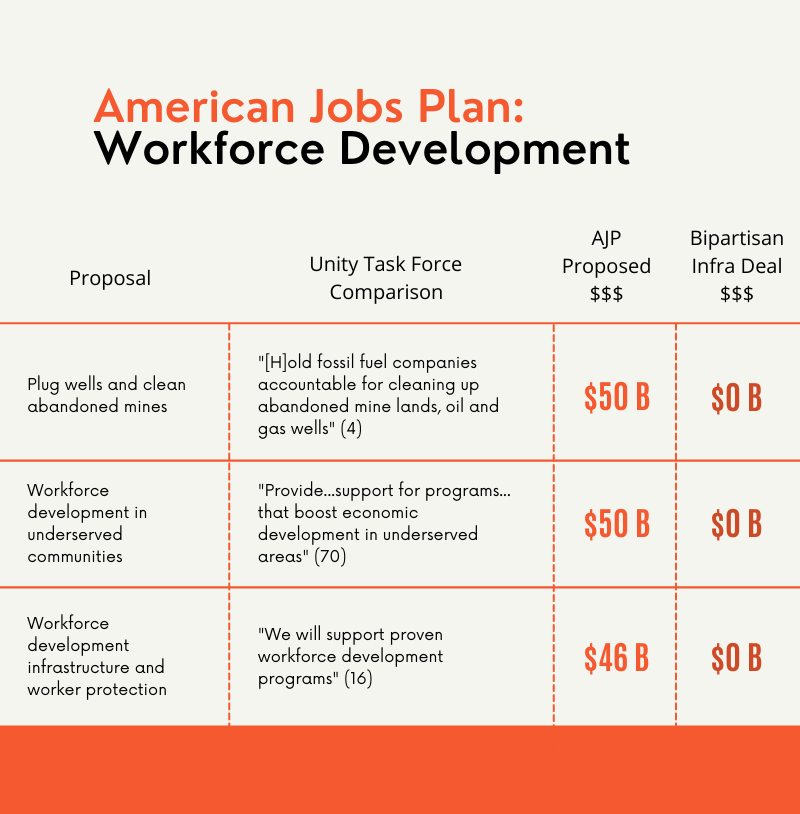
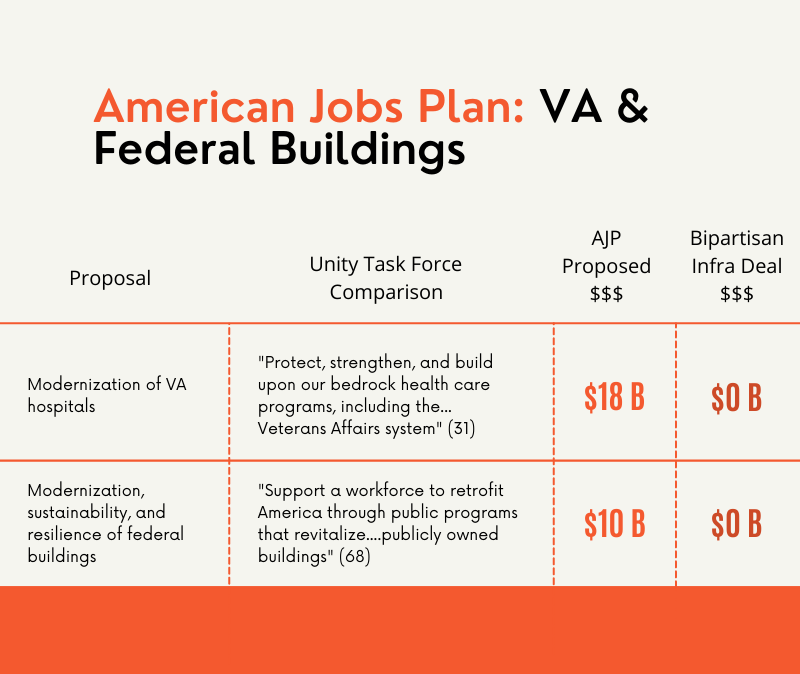
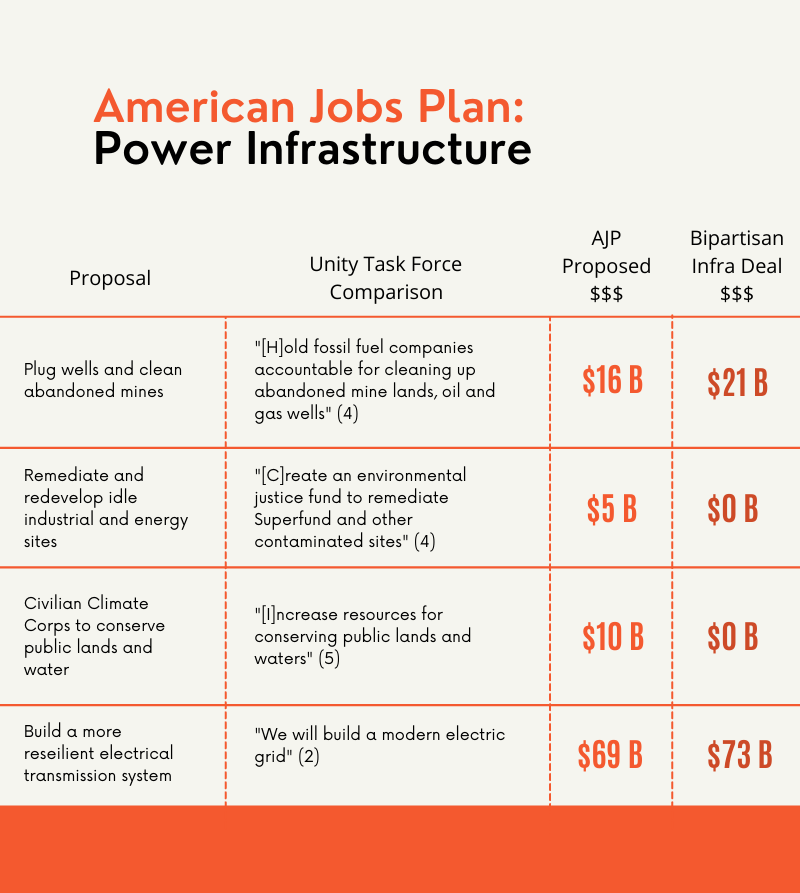
American Families Plan
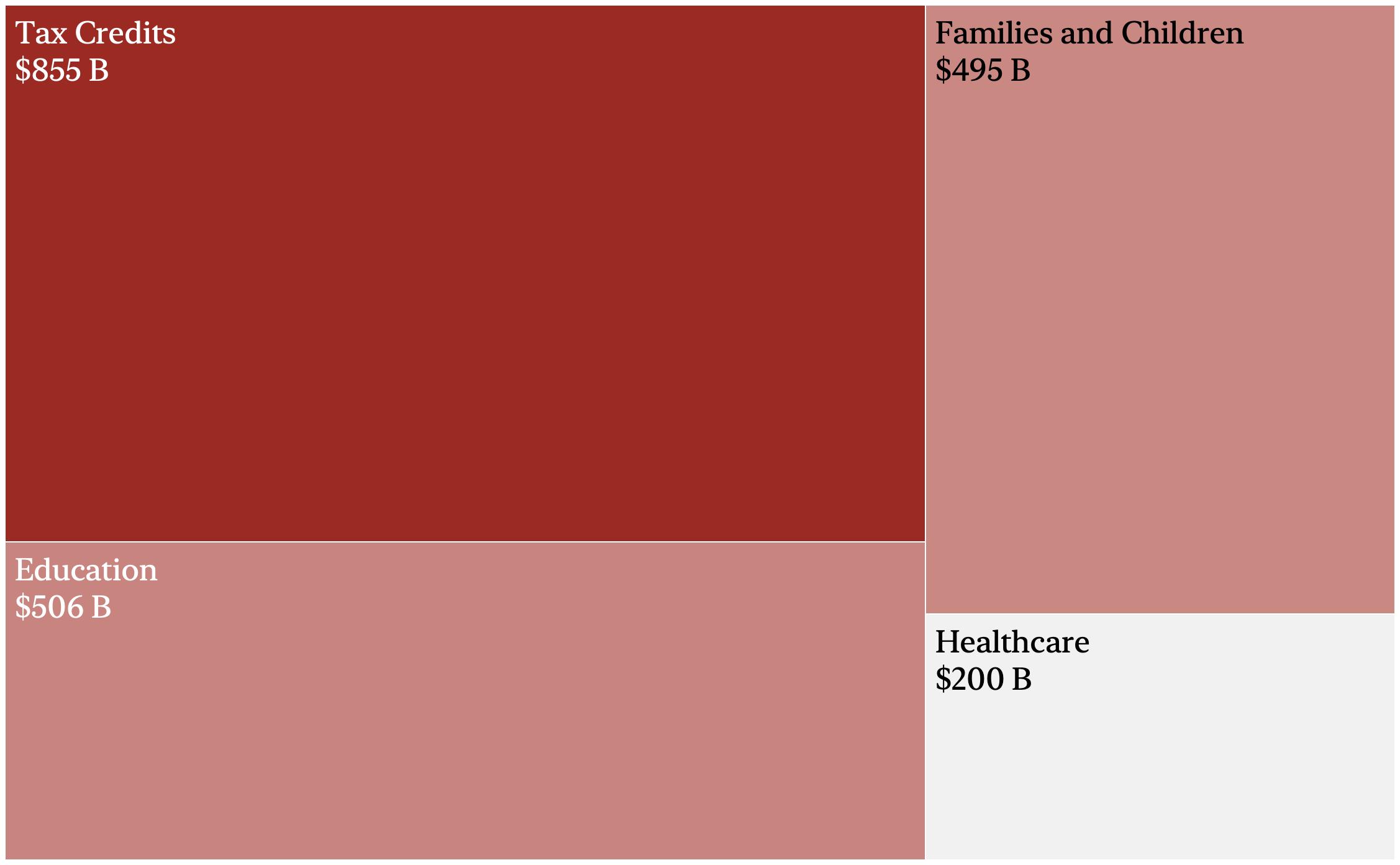
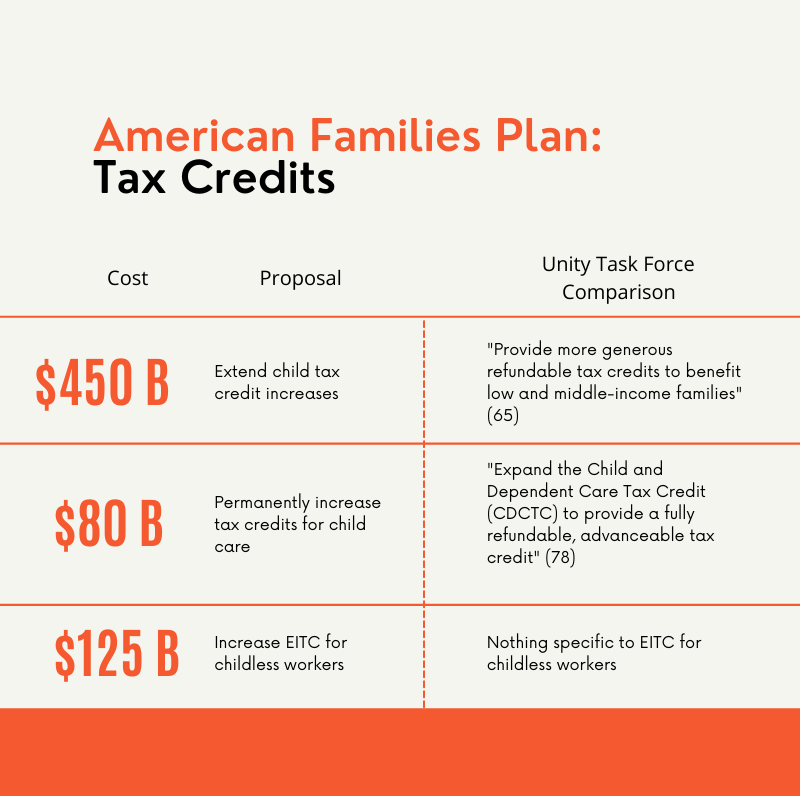
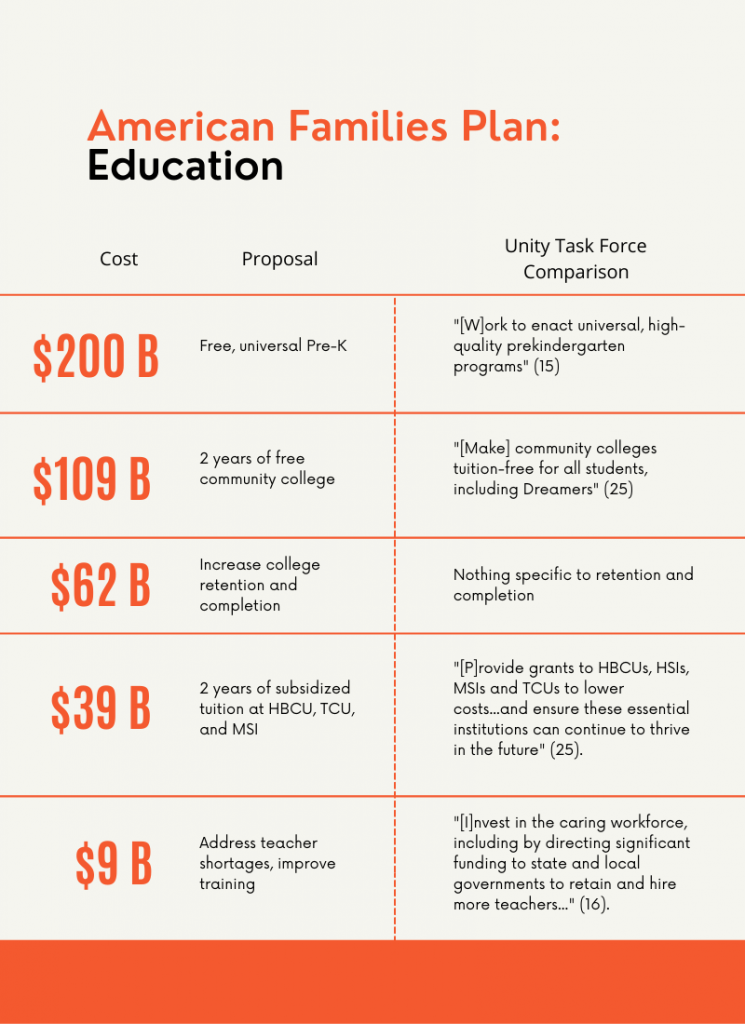
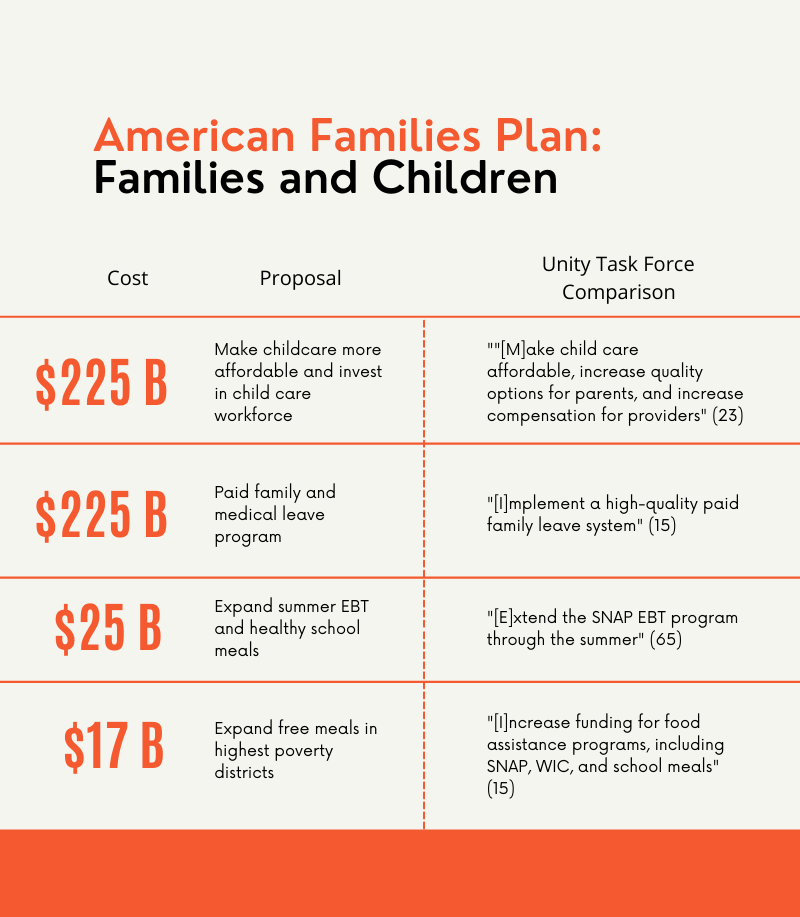
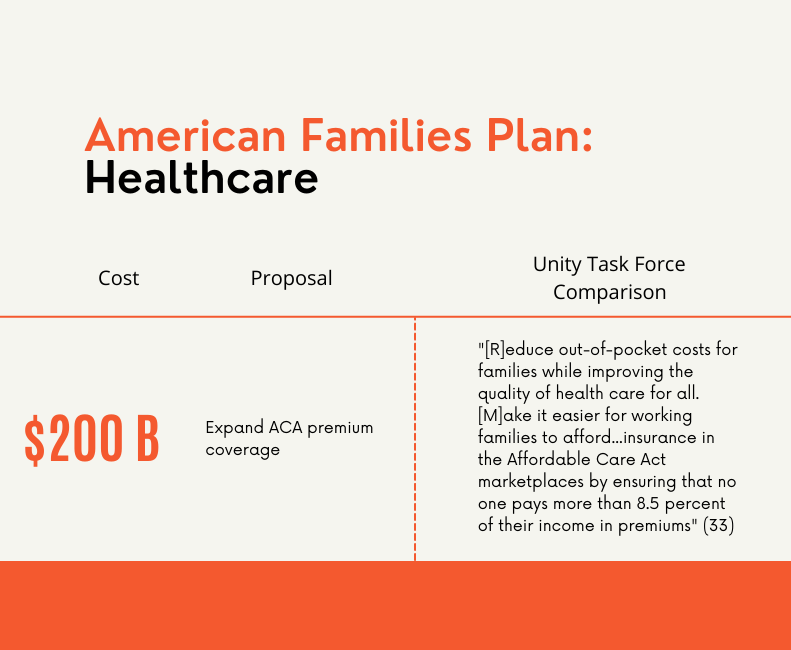
Biden’s Agenda for 2022 and Beyond?
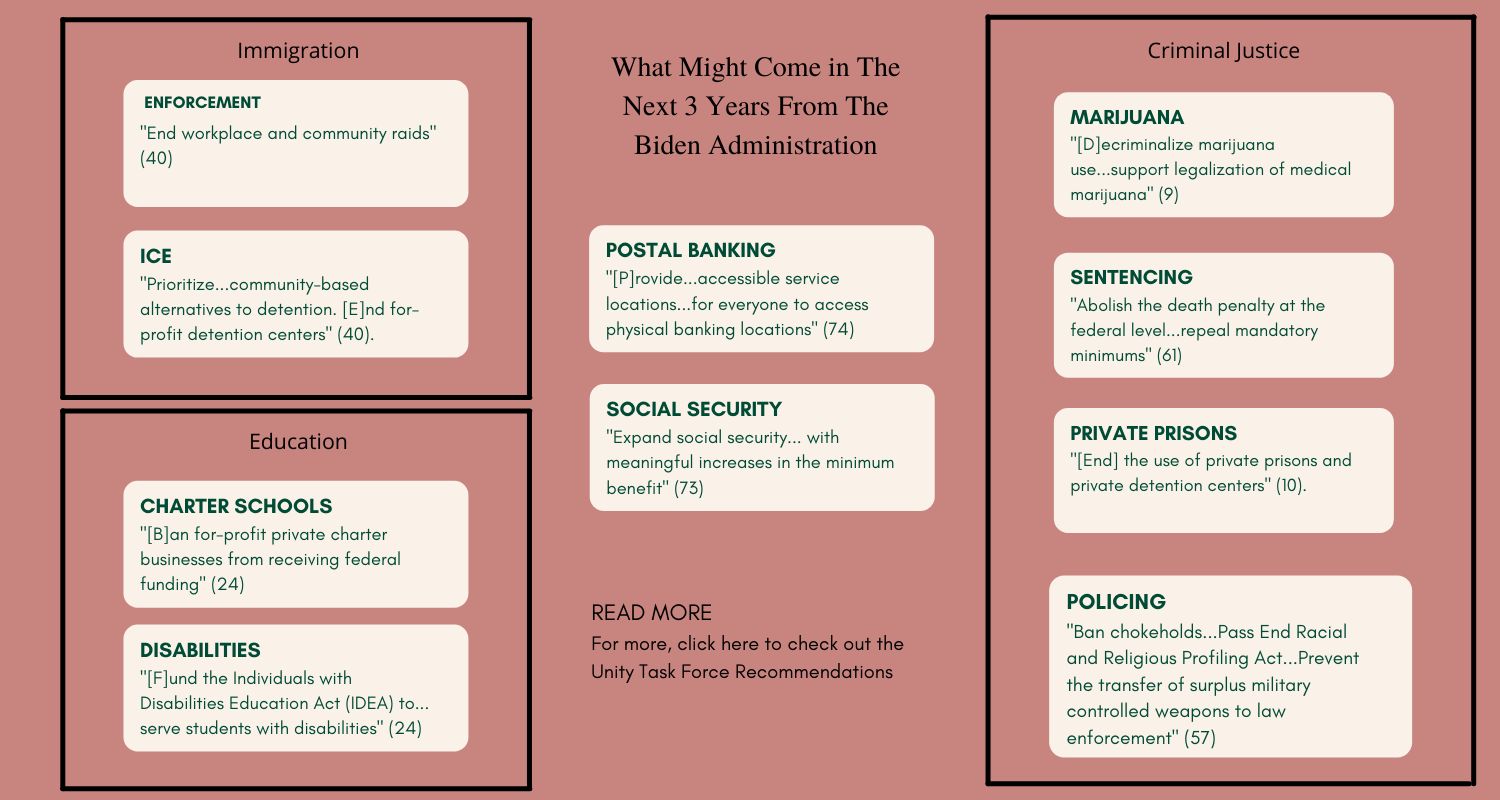
Data comparisons gathered from the Unity Task Force Plan. Further, tax credit data provided courtesy of CRFB.
